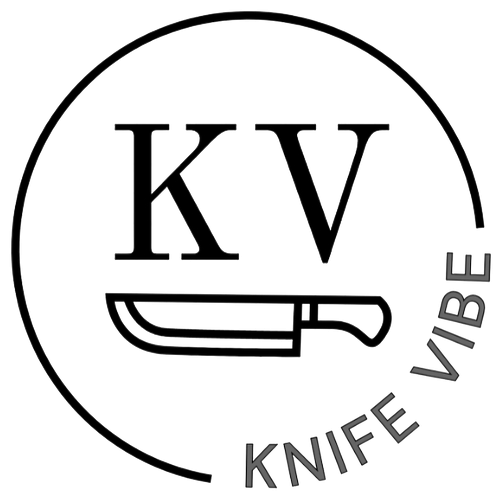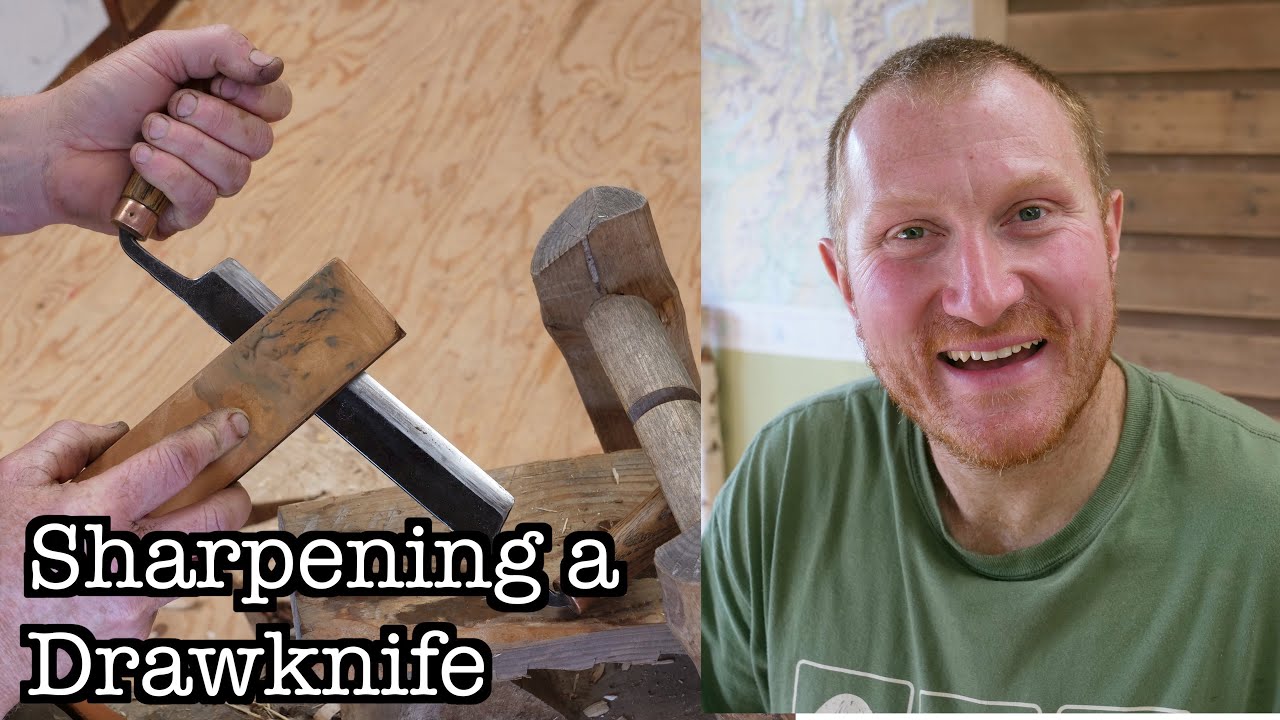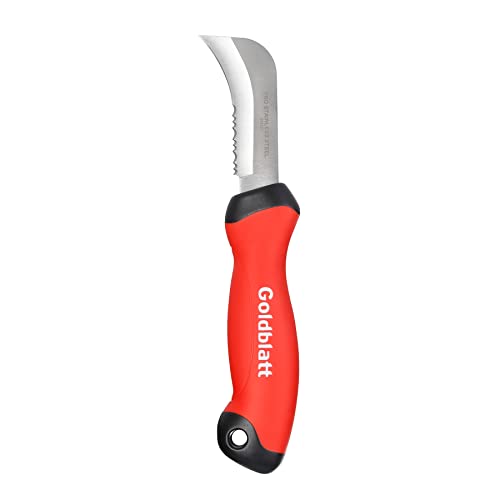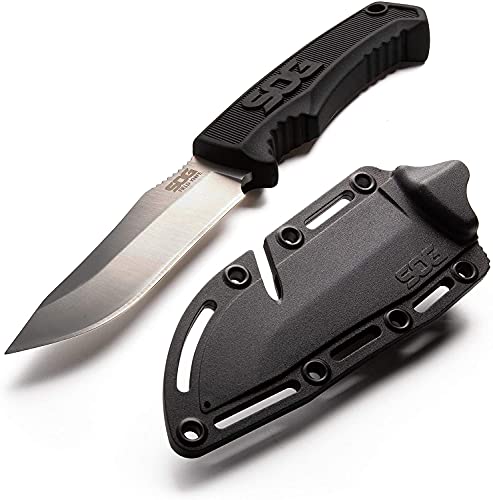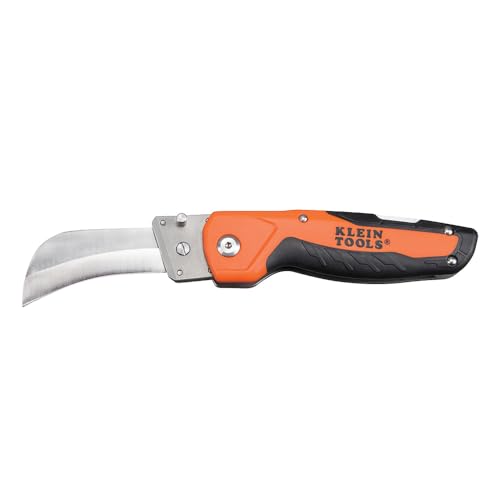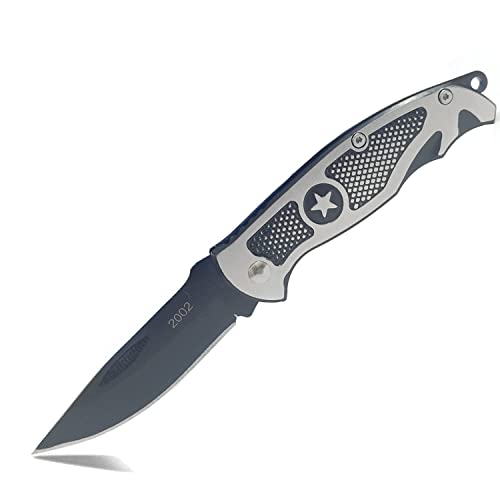How to Sharpen a Draw Knife: Expert Tips for Precision
Sharpening a draw knife is essential for its performance. A sharp draw knife ensures clean, precise cuts.
A draw knife is a valuable tool for woodworkers and craftsmen. Over time, it can become dull, making tasks harder and less accurate. Regular maintenance and sharpening keep it effective and safe to use. In this guide, you will learn the best methods to sharpen a draw knife.
Whether you are a seasoned woodworker or a beginner, mastering this skill is crucial. Proper sharpening not only extends the life of your tool but also enhances your woodworking projects. Let’s dive into the process and make your draw knife as sharp as new.
Introduction To Draw Knives
A draw knife is a vital tool for woodworkers. It features a blade with handles on both ends. Users pull the blade towards themselves to shave off thin wood layers. This tool is versatile and has been used for centuries. It is essential for creating smooth, precise cuts in wood.
History And Uses
Draw knives date back to ancient times. They were used by early carpenters and woodworkers. Over the years, their design has remained simple yet effective. They are used for shaping and smoothing wooden surfaces.
Woodworkers use them to make furniture, tools, and even wooden sculptures. Farmers also use them for making handles and other wooden implements. Draw knives are indispensable in traditional woodworking.
Types Of Draw Knives
There are several types of draw knives. Each type serves a specific purpose:
- Straight draw knives: Ideal for general woodworking tasks.
- Curved draw knives: Perfect for shaping concave surfaces.
- Adjustable draw knives: Offer versatility with adjustable blade angles.
Choosing the right type depends on the task at hand. A straight draw knife works well for flat surfaces. A curved draw knife is better for bowls and rounded objects. Adjustable draw knives can be customized for various tasks.

Credit: www.finewoodworking.com
Importance Of A Sharp Draw Knife
A sharp draw knife ensures clean and precise cuts on wood. Proper sharpening helps maintain its edge and extends its life. Keep your tool effective and safe with regular sharpening.
A sharp draw knife is essential for woodworking. It ensures smooth and precise cuts. You can work faster and more efficiently with a sharp tool. This saves time and effort. A well-sharpened draw knife also enhances safety. It reduces the risk of slips and accidents.Benefits Of Sharpness
Sharpness improves the quality of your work. You achieve cleaner and more accurate cuts. The wood surface remains smoother. This reduces the need for extra sanding. A sharp draw knife also requires less force. This makes the task less tiring. Your hands and arms experience less strain.Risks Of A Dull Knife
A dull draw knife poses many risks. It demands more effort to cut through wood. This increases the chance of slips and mistakes. You might damage the wood or your workpiece. A dull knife is also more dangerous. It can cause serious injuries. Your hands could slip, leading to cuts or bruises. Keeping your draw knife sharp is crucial. It improves both your safety and the quality of your work. “`Tools Needed For Sharpening
To keep your draw knife in top condition, you need to sharpen it properly. Sharp tools make woodworking easier and safer. For effective sharpening, you will need several essential tools. These tools help you maintain the blade’s sharpness and ensure a smooth cutting experience.
Sharpening Stones
Sharpening stones are crucial for sharpening a draw knife. They come in different grits. Start with a coarse stone to shape the blade. Use a finer grit stone for a sharper edge. Water stones and oil stones are popular choices. Wet the stone before sharpening. Move the blade along the stone at a consistent angle.
Honing Guide
A honing guide helps maintain the correct angle while sharpening. It holds the blade steady. This ensures even sharpening. Guides are adjustable to fit different blade sizes. Using a honing guide can make the process easier. It is especially helpful for beginners.
Stropping Materials
Stropping materials are used for the final touch. They polish the blade and remove any burrs. A leather strop is common. Apply a stropping compound to the leather. Pull the blade across the strop gently. This step makes the blade razor-sharp. It also extends the time between sharpening sessions.

Credit: www.youtube.com
Preparing The Draw Knife
Before sharpening a draw knife, it is crucial to prepare it properly. This involves several steps that ensure the blade is in the best condition. Follow these steps to make the sharpening process easier and more effective.
Cleaning The Blade
Begin by thoroughly cleaning the blade. Dirt, grime, and rust can affect sharpening. Use a soft cloth and warm soapy water to remove surface dirt.
- Scrub gently to avoid scratching the blade.
- For stubborn rust, use a rust remover or fine steel wool.
- Dry the blade completely to prevent further rust.
Keeping the blade clean ensures a smooth sharpening process. A clean blade also improves the tool’s longevity.
Inspecting For Damage
After cleaning, inspect the blade for any damage. Look for nicks, chips, or bends that might need attention.
- Hold the blade up to the light to check for imperfections.
- Run your finger carefully along the edge to feel for rough spots.
- Use a magnifying glass to inspect for small cracks or chips.
If you find any damage, repair it before sharpening. Small nicks can be smoothed out with a whetstone. Larger issues might require professional help.
Sharpening Techniques
Keeping your draw knife sharp is crucial for efficient woodworking. Proper sharpening techniques ensure you maintain a fine edge. This makes your tool more effective and safe to use. Below, we will explore two key techniques for sharpening your draw knife.
Setting The Angle
First, determine the correct angle for your draw knife. Typically, a 25-degree angle is ideal. This ensures a balance between sharpness and durability.
Use a protractor or an angle guide to set this angle. Mark the angle on the blade with a marker for reference. This visual guide helps maintain consistency during sharpening.
Using Sharpening Stones
Sharpening stones come in various grits. Start with a coarse stone if the blade is very dull. Move to finer grits to refine the edge.
Here’s a step-by-step guide:
- Secure the draw knife: Clamp it firmly to prevent movement.
- Lubricate the stone: Use oil or water as per the stone’s requirements.
- Begin with coarse stone: Hold the blade at the set angle. Slide it back and forth across the stone.
- Progress to finer grits: Repeat the process with medium and fine stones.
- Check the edge: Use your finger to feel for a burr. The burr indicates a sharp edge.
Be consistent with your strokes. Ensure equal pressure across the blade. This uniformity keeps the edge even and sharp.
Sharpening stones can also be used for honing. Honing further refines the edge, making it razor-sharp.

Credit: www.inthewoodshop.com
Honing And Stropping
Sharpening a draw knife is essential for maintaining its effectiveness. Two important steps in this process are honing and stropping. Both steps ensure your draw knife remains sharp and ready for use. Let’s dive into the details of these crucial steps.
Purpose Of Honing
Honing is the process of refining the edge of your draw knife. It smooths out any roughness from previous sharpening.
To hone a draw knife, you need a honing stone. Here is a simple step-by-step guide:
- Wet the honing stone with water or oil.
- Place the draw knife at an angle on the stone.
- Move the knife in a circular or back-and-forth motion.
- Ensure both sides of the blade are honed evenly.
Honing removes tiny imperfections and prepares the blade for stropping. It’s a vital step in achieving a sharp edge.
Stropping For A Razor Edge
Stropping gives your draw knife a razor-sharp edge. It involves polishing the blade using a leather strop.
Follow these steps to strop your draw knife:
- Secure the leather strop on a flat surface.
- Apply a small amount of stropping compound to the leather.
- Hold the draw knife at a slight angle on the strop.
- Pull the blade across the strop, moving away from the cutting edge.
- Repeat the process on both sides of the blade.
Stropping aligns the edge and removes any remaining burrs. This results in a finely polished, sharp edge.
| Step | Honing | Stropping |
|---|---|---|
| Purpose | Refines the edge | Polishes the edge |
| Tool | Honing Stone | Leather Strop |
| Motion | Circular or back-and-forth | Pull away from edge |
With proper honing and stropping, your draw knife will stay sharp and efficient. Remember, a sharp tool is a safe tool. Happy sharpening!
Maintaining The Edge
Maintaining the edge of a draw knife is essential for smooth woodworking. A well-kept blade ensures clean cuts and reduces effort. Proper maintenance extends the tool’s life and keeps it reliable.
Regular Maintenance
Regular maintenance involves frequent cleaning and sharpening. After each use, wipe the blade with a clean cloth. This removes wood particles and prevents rust. Use a honing stone to keep the edge sharp. Move the blade in a consistent motion against the stone. Maintain a steady angle for best results.
Inspect the draw knife regularly for nicks or dull spots. Address these issues immediately to avoid larger problems. A sharp blade provides better control and precision in your work.
Storage Tips
Proper storage is vital to maintaining the edge. Store the draw knife in a dry place. Moisture can cause rust and damage the blade. Consider using a protective sheath. This keeps the blade covered and safe from accidental damage.
Keep the draw knife away from other tools. Contact with other metal objects can dull the edge. Hang the tool on a wall or place it in a dedicated drawer. This ensures it remains in good condition for future use.
Common Mistakes To Avoid
Sharpening a draw knife can be tricky. Many make common mistakes that damage the tool. This section will highlight these mistakes. Avoid them to keep your draw knife in good shape.
Incorrect Angles
Using the wrong angle is a common mistake. The blade of a draw knife needs a specific angle to stay sharp. If the angle is too steep, the blade will dull quickly. If the angle is too shallow, it won’t cut well.
Here is a simple guide to get the right angle:
- Keep the blade at a 25 to 30-degree angle.
- Use a sharpening stone or file to maintain this angle.
- Check the angle often to ensure accuracy.
Maintaining the correct angle ensures a sharp and efficient blade.
Over-sharpening
Another mistake is over-sharpening. This happens when too much material is removed from the blade. Over-sharpening can weaken the blade and shorten its lifespan.
Follow these tips to avoid over-sharpening:
- Sharpen only when necessary.
- Use light, even strokes when sharpening.
- Check the blade often to see if it is sharp enough.
Over-sharpening can be avoided with careful attention. This keeps the blade strong and durable.
By avoiding these common mistakes, you can keep your draw knife in top condition. This ensures it remains a valuable tool in your workshop.
Frequently Asked Questions
What Is A Draw Knife Used For?
A draw knife is used for shaping wood. It is ideal for removing bark, rough shaping, and carving.
How Often Should I Sharpen A Draw Knife?
You should sharpen a draw knife regularly. Frequency depends on usage, but generally, after every few hours of use is recommended.
What Tools Do I Need To Sharpen A Draw Knife?
To sharpen a draw knife, you need a sharpening stone, honing oil, and a strop for polishing.
Can I Use A File To Sharpen A Draw Knife?
Yes, you can use a file to sharpen a draw knife. However, for a finer edge, follow up with a sharpening stone.
Conclusion
Sharpening a draw knife is essential for smooth woodworking. Follow these steps for best results. Use proper tools and techniques to maintain the blade. Regular sharpening keeps your draw knife efficient. Practice makes perfect, so don’t get discouraged. Keep your draw knife sharp and ready for any project.
Happy woodworking!
